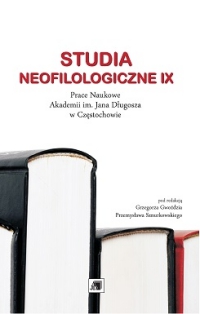Od badań korpusowych do słownika (na podstawie użycia włoskiego "come")
From the Corpus Research to the Dictionary
(Based on the Use of the Italian Come)
Author(s): Aleksandra PronińskaSubject(s): Applied Linguistics
Published by: Uniwersytet Jana Długosza w Częstochowie
Summary/Abstract: The object of the article is the analysis of such use of the Italian lexeme «come», in which it simultaneously fulfils two conditions: introduces a comparison and a subordinate clause defining a hypothetical, unreal situation. On the basis of the corpus research, from the structures which meet the above mentioned conditions, two types of structures have been selected: (1) the structures containing «come se» and (2) the structure containing «come per + infinitive». Structures of the first type, represented in Italian by personal statements, are normally distinguished in lexicographical studies. The latter type, implemented in Italian by non-personal statement, for example, Si voltò come per cercare aiuto e mi vide [...] / He turned as if looking for help and saw me [...] (U. Eco, Il nome della rosa [The Name of the Rose], tr. A. Szymanowski) is occasionally included in dictionaries. The thesis put in the paper concerns the desirability of placing in the lexicographical descriptions the structures of the second type, to which in Polish a specified number of syntactic constructions corresponds (as indicated by the corpus research).
Journal: Prace Naukowe Akademii im. Jana Długosza w Częstochowie. Studia Neofilologiczne
- Issue Year: IX/2013
- Issue No: 09
- Page Range: 157-165
- Page Count: 9
- Language: Polish

